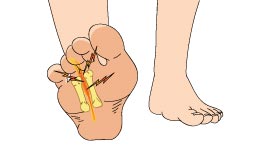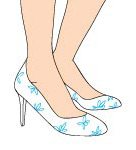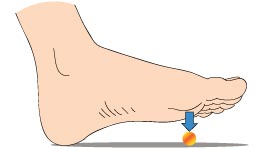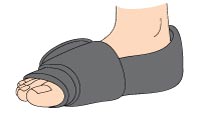 What is Morton’s Neuroma?
What is Morton’s Neuroma?
A neuroma occurs when your nerve tissue becomes compressed and thickens as a result of this compression, causing pain, numbness, tingling and burning.
While neuromas can develop in other areas of your foot, the most common is called Morton’s Neuroma (also called Intermetatarsal Neuroma), which is located between your 3rd and 4th toes.
 Causes
Causes
Causes of Morton’s Neuroma include wearing shoes with narrow toes (especially high heels), foot deformities (including bunions, flat feet, hammer toes, and more), and physical activities that involve heavy and repetitive use of your Metatarsals (the balls of your feet).
Symptoms
- Pain

- Numbness
- Burning and/or tingling sensations
- Feeling that you have something stuck in your shoe or inside your Metatarsals (such as a stone or marble)
Progression of Morton’s Neuroma
A case of Morton’s Neuroma will usually progress in this fashion:
- Slow onset of symptoms, usually when engaged in sports such as basketball, tennis, soccer, rugby, etc. or when wearing shoes that squeeze the toes
- Symptoms may disappear when activity stops or shoes with narrow toes are not worn
- Symptoms begin to get worse and last longer
- The neuroma becomes more irritated and inflamed, causing the symptoms to become more pronounced (nerve damage can become permanent past this stage)
Treatment
Proper Footwear
Stick to footwear that fits properly. Avoid footwear that’s too tight. Avoid high heels.
Use a cold compression wrap that is designed for the foot. This will provide relief of the pain and inflammation.
Rest
Take time off from activities that could aggravate your Morton’s Neuroma.
